EXPLORING THE WORLD OF
J. S. BACH
Germany, ca. 1720. Johann Baptist Homann, Postarum seu Veredariorum Germaniam et Provincias Adiacentes. Neu vermehrte PostCharte durch gantz Teutschland revised edition (Nuremberg). Detail.
EXPLORING THE WORLD OF
J. S. BACH
A TRAVELERS GUIDE
ROBERT L. MARSHALL
AND
TRAUTE M. MARSHALL
Published in cooperation with the American Bach Society
University of Illinois Press
Urbana, Chicago, and Springfield
This publication is sponsored by the American Bach Society and produced under the guidance
of its Editorial Board. For information about the American Bach Society, please see its website at www.americanbachsociety.org.
2016 by the Board of Trustees
of the University of Illinois
All rights reserved
Manufactured in the United States of America
1 2 3 4 5 C P 5 4 3 2 1
 This book is printed on acid-free paper.
This book is printed on acid-free paper.
Library of Congress Cataloging-in-Publication Data
Names: Marshall, Robert Lewis, author. | Marshall, Traute M., 1942 author.
Title: Exploring the world of J.S. Bach: a travelers guide / Robert L. Marshall and Traute M. Marshall.
Description: Urbana, Chicago, and Springfield : University of Illinois Press, 2016. | Published in cooperation with the American Bach Society. |
Includes bibliographical references and index.
Identifiers: LCCN 2015047399 (print) | LCCN 2015048837 (ebook) | ISBN 9780252040313 (cloth : alk. paper) | ISBN 9780252081767 (pbk. : alk. paper) | ISBN 9780252098574 (ebook)
Subjects: LCSH : Bach, Johann Sebastian, 16851750Homes and hauntsGermany. | GermanyDescription and travel. | LCGFT : Guidebooks
Classification: LCC ML 410. B 13 M 272 2016 (print) | LCC ML 410.B13 (ebook) | DDC 780.92dc23
LC record available at http://lccn.loc.gov/2015047399
CONTENTS
Part Two: Towns Certainly or Presumably()
Visited by J. S. Bach (Alphabetical)
FOREWORD
It is with great pleasure that the American Bach Society, in collaboration with the University of Illinois Press, publishes Exploring the World of J. S. Bach: A Travelers Guide . The Societys first venture into special publications, The Organs of J. S. Bach: A Handbook , issued in 2012, proved to be such a happy undertaking that the Societys Editorial Board quickly settled upon the idea of creating a companion volume, a guide to the Bach sites in Germany.
That a new sites guide, in English, was needed was apparent for many of the same reasons that spurred the publication of the organ handbook. The opening of Thuringia and Saxony after the fall of the Socialist government in 1989 and the reunification of Germany the following year have suddenly made the region where Bach lived and worked easily accessible to tourists for the first time in almost half a century. The rapid restoration and reconstruction of towns, churches, and palaces known to Bach and the establishment of new, visitor-friendly museums also call out for an up-to-date guide. While a number of books discussing the Bach sites are available in German and ostensibly could be translated into English, none capture the full range of recent developments such as the rebuilding of the Church of our Lady in Dresden (the site of Bachs triumphant organ concert before the Electors musicians in 1736), the reimagining of the facade of the University Church in Leipzig (where Bach performed the Trauer-Ode, La Frstin, la noch einen Strahl in 1727), or the re-creation of the Royal Palace in Potsdam (where Bach improvised on Silbermann fortepianos before Frederick the Great in 1747). In addition, no existing guides incorporate the most recent findings of Bach research, a field that has flourished in the past twenty-five years with the opening of long-inaccessible archives in the former East Germany and Russia and the renewed efforts of the Bach Expedition team of the Leipzig Bach Archive. For all of these reasons, the Editorial Board concluded that an entirely new handbook was required, rather than the translation of an existing German guide. But who would write it?
By happy coincidence, distinguished Bach scholar and past president of the American Bach Society Robert L. Marshall and his wife Traute expressed interest in the project at an early stage of development. One cannot imagine a better set of tour guides. Robert, winner of the Kinkeldey Prize from the American Musicological Society and the Deems Taylor Award from ASCAP, is well known for his exacting scholarship and game-changing essays. The Compositional Process of J. S. Bach opened the world of source studies to American musicologists when it appeared in 1972, and articles such as Bach the Progressive and Organ or Klavier? Instrumental Prescriptions in the Sources of Bachs Keyboard Works altered the way we think about Bach and the performance of his works. Traute, a native German, is an equally seasoned writer, editor, and translator. Her German translations of Charles Rosens The Classical Style and James Lyons Brecht in America have become standards in the German-speaking world, and her Art Museums PLUS: Cultural Excursions in New England takes the precise guidebook approach desired for the present undertaking. It was clear from the start that the Marshalls, blessed with broad experience, impressive Bach credentials, and a rich sense of humor were the perfect team to produce a handbook on the German Bach sites.
Also auspicious for the present project was the American Bach Societys long-standing ties with the University of Illinois Press. For almost two decades now the Society and the Press have collaborated on publications such as Bach Perspectives, About Bach , and The Organs of J. S. Bach . With the strong support of then-Director William Regier, the savvy guidance of then-Senior Acquisitions Editor Laurie Matheson, and the elegant design work of Jim Proefrock (so evident in the organ handbook), the project was able to move forward in a smooth, efficient, and effective way. It has been a delight to join forces once again with the UIP team.
What the Marshalls have provided is far more than a straightforward guide to the Bach sites. In the course of discussing the activities of Bach in 51 German towns, they present an up-to-date overview of Bach biography, one that incorporates the very latest discoveries of Bach research. With substantial discussions of the architecture and art of the individual buildings and museums, the Marshalls also provide a concise study of Medieval, Renaissance, and Baroque art history. And by drawing on early guides to the postal and travel routes, they give us a sense of just how much time Bach spent in transit, and just how arduous many of his journeys actually were. Who would have thought that the trip from Leipzig to Kassel, a quick ride of less than three hours on the Intercity train today, took Bach at least a week in 1732, with overnight stops that probably included stays in Weienfels, Erfurt, and Gotha? Although Bach did not venture abroad, it is obvious from the present guide that he spent much more time on the road than previously thought, traveling from town to town within Germany.
But most importantly, by drawing on critical details, the Marshalls convey a vivid picture of Bachs daily life. In 1730, disgruntled by deteriorating conditions for music-making in Leipzig, Bach reminisced to his school chum Georg Erdmann that he had been supremely happy in Kthen and had planned to spend the rest of his days there. The present volume shows that his employer in Kthen, Prince Leopold, spent the equivalent of almost $422,000 on a single stay at the Spa in Karlsbad. Why wouldnt Bach have been happy in such an environment of luxury, as a prized and graciously supported keyboard virtuoso in the Princes retinue?!

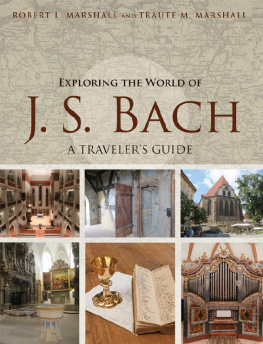
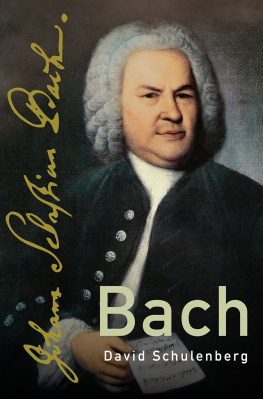


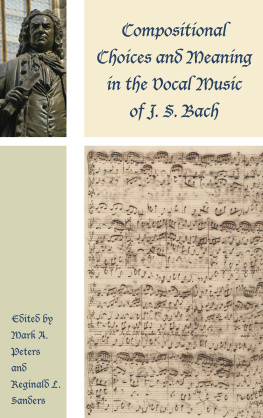
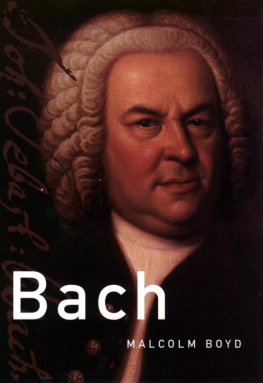
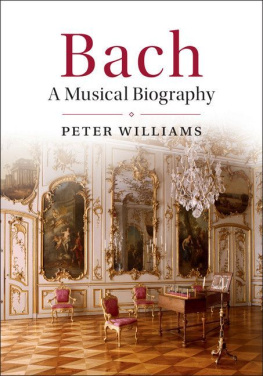
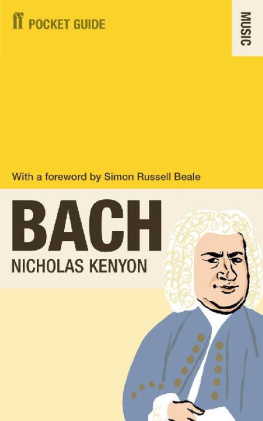
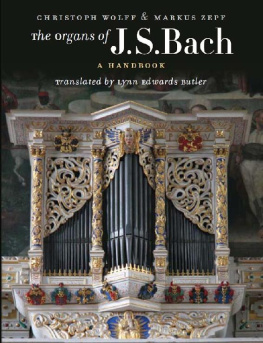

 This book is printed on acid-free paper.
This book is printed on acid-free paper.